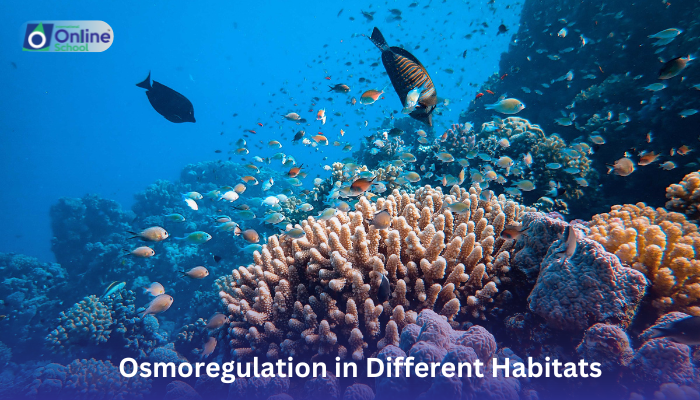
Learning Outcomes
By the end of this lesson, students will be able to:
i. Explain the concept of osmoregulation and its significance for organisms in different habitats.
ii. Describe the osmoregulatory challenges faced by organisms in freshwater, marine, and terrestrial environments.
iii. Identify the adaptations employed by organisms to maintain osmotic balance in various habitats.
iv. Discuss the ecological implications of osmoregulation and its role in shaping the distribution of organisms.
Introduction
The ability of organisms to maintain a stable internal osmotic balance, known as osmoregulation, is essential for their survival and reproduction. Osmoregulation plays a crucial role in regulating water and solute concentrations within cells, ensuring optimal cellular function and overall organismal health. Organisms face varying osmoregulatory challenges depending on their habitat, ranging from the low-salinity freshwater environment to the high-salinity marine environment and the water-scarce terrestrial environment.
i. Freshwater Osmoregulators: A Delicate Balance
In freshwater environments, the osmotic pressure of the surrounding water is lower than the internal osmotic pressure of the organism. This creates a constant tendency for water to enter the organism's cells through osmosis. To counteract this influx, freshwater organisms must actively remove excess water to maintain their internal osmotic balance.
Kidneys: Freshwater fish rely heavily on their kidneys to excrete excess water and retain solutes. Their kidneys produce large volumes of dilute urine, which helps to expel excess water while conserving essential salts.
Gills: Freshwater amphibians utilize their gills for both gas exchange and osmoregulation. They actively absorb salts from the surrounding water through their gills, helping to maintain their internal osmotic balance.
ii. Marine Osmoregulators: Facing Salinity Extremes
Marine organisms face the opposite challenge – their internal osmotic pressure is lower than the osmotic pressure of the surrounding seawater. This constant tendency for water to leave the organism's cells through osmosis necessitates adaptations to prevent excessive water loss and maintain internal solute concentration.
Kidneys: Marine fish conserve water by producing concentrated urine, minimizing water excretion. They also actively absorb salts from seawater through their gills, maintaining their internal osmotic pressure.
Salt-Secreting Glands: Marine birds, such as seagulls, have evolved specialized salt-secreting glands near their nostrils to excrete excess salt ingested from seawater. This adaptation prevents salt buildup and maintains their internal osmotic balance.
iii. Terrestrial Osmoregulators: Conserving Water in Arid Environments
Terrestrial organisms face the constant challenge of water loss in dry environments. They have developed various adaptations to conserve water and minimize water loss through osmosis and evaporation.
Impermeable Skin: Reptiles, such as snakes and lizards, have developed an impermeable skin layer, often covered in scales or waxy coating, to minimize water loss through evaporation.
Behavioral Adaptations: Desert animals exhibit behavioral adaptations to conserve water, such as seeking shade during the hottest parts of the day, reducing activity levels, and utilizing burrows for shelter.
Excretory Adaptations: Terrestrial organisms, such as mammals and birds, produce concentrated urine to conserve water and excrete waste products efficiently.
iv. Ecological Implications of Osmoregulation
Osmoregulation plays a significant role in shaping the distribution of organisms across different habitats. Organisms with specific osmoregulatory adaptations are limited to habitats that match their physiological capabilities. For instance, freshwater fish cannot survive in seawater due to their inability to cope with the high salt concentration.
Osmoregulation, the intricate process of maintaining osmotic balance, is a fundamental aspect of life, allowing organisms to thrive in a diverse range of environments. The remarkable adaptations organisms have evolved to overcome osmoregulatory challenges highlight the resilience and adaptability of life. From the water-conserving desert dwellers to the salt-balancing marine creatures, osmoregulation is a testament to the intricate strategies that life has developed to conquer environmental adversity.